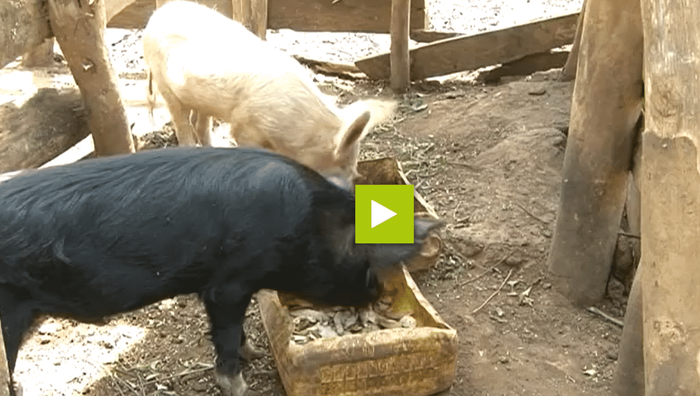Many farmers raise a small number of pigs for slaughter, for piglets or for sell in urban markets. Some pigs are tethered during the day and released at night.
Roaming pigs are more susceptible to diseases, parasites and when young, they can be attacked by dogs or wild animals. Hence when keeping pigs for business it‘s better to house them all the time.
Benefits
One is able to monitor the pigs and watch how much they have eaten and preventing crops from being destroyed. Allows one to easily give them water and feeds, monitor their growth, collect their waste and help prevent diseases. Housing helps them get shed so as they are not burned by the sun and maintaining temperature of the pigs as they are not disturbed or stressed.
Stables constructions
When building the pigs house make sure it receives sun only in the morning and late afternoon to avoid being too hot. P art of the building should be exposed to sunshine or allow the pigs access to outside area so that they can lay on the sun if they want to.
The house should divided into two sections, covered ares where the sleep and feed, and outside area where the water trough is placed where the pigs will dung and urinate.
Choice of material
Pigs building can be a wooden construction with four or more support to raise it off the ground, the floor is slatted, the gaps between the slats should be more than 2 cm to allow urine and droppings to fall on ground for easy collection, for ground building the floor should be concrete and sloping for easy cleaning. Deep litter system can be used instead of concrete.
Solid materials like bricks are used to construct the walls of pens, the walls should have gaps to allow air in and to keep the pigs cool. The area between the wall and the roof should be open so that its well ventilated, the gap should be at least 1m high. Iron sheets or shade from trees can be used as roof.
The size of pen depends on the number, type and age of pigs. Over crowding stresses the animals ,they won‘t grow and will be susceptible to diseases, a sow should be kept from her piglets while adult male are kept separate from each other.



















